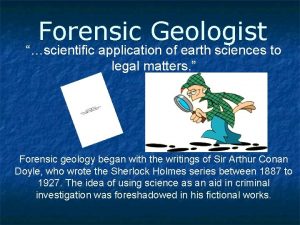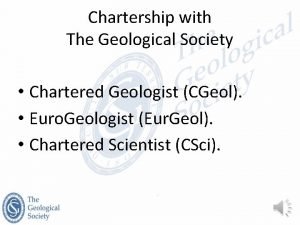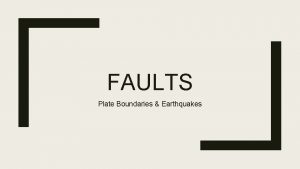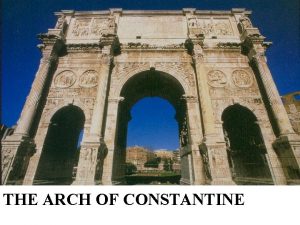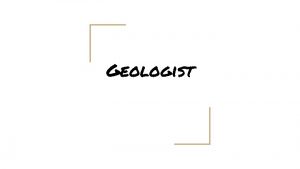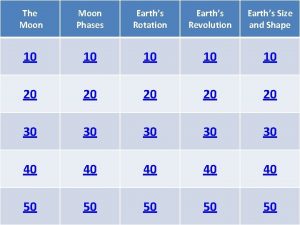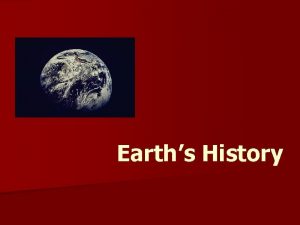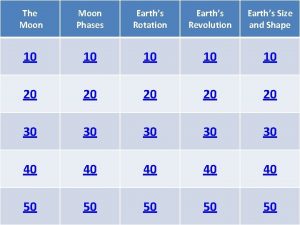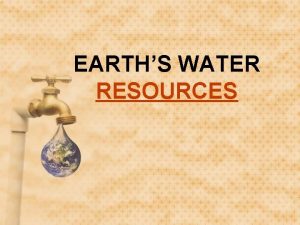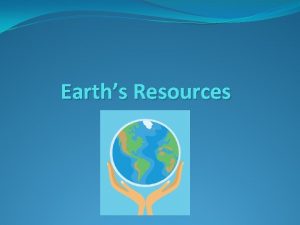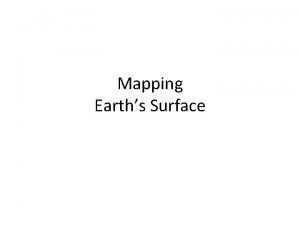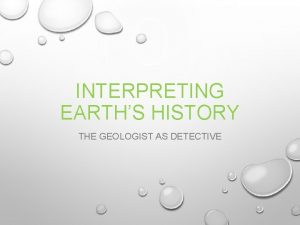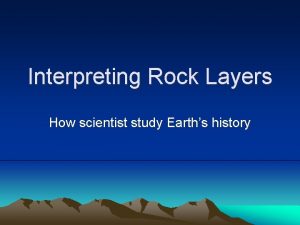Earths Interiorinside Geologist A geologist is a scientist






















- Slides: 22

Earth’s Interior=inside

Geologist • A geologist is a scientist that studies the forces that shape earth’s surface • 200 years ago was the start of geology • Geology is fairly new

Rock • The material that forms Earth’s surface • Geologists study rocks

Forces that shape Earth • Constructive • Destructive

Constructive • Building up Ex. Construction The building (MS) was changed constructively.

Constructive • Mountain ranges forming(slowly) • Over millions of years

Destructive • Forces that slowly wear down the Earth’s surface • Destroy =Destruction

Destructive • Erosion by wind and water • Think of our local beaches

Journey to the Center of the Earth • Temperature increases • Pressure increases

How do we know what inside Earth is like if we can’t travel through it? • Scientist know this by studying seismic waves/data from earthquakes

If you took that journey you would find layers of the Earth • Crust • Mantel • Core

Crust • • “skin” of earth Like the shell of an egg or onion skin VERY THIN!!!!!! Includes land on bottom of ocean floor – Thinnest under the ocean(basalt) – Thickest under mountains(granite) • Is part of the lithosphere • Most abundant element oxygen then silicon

Lithosphere • Lithosphere means stone • Crust and uppermost mantle • Rigid • Contains plates

Oceanic vs. Continental Crust Oceanic Continental Under oceans Under continents thinner thicker Made of basalt(think salty ocean) Made of granite More dense Less dense

Asthenosphere • • • Gooey/bendable Plastic like rock Convection take place here Found in Upper mantle only NOT A LIQUID!!!! SOLID

Mantle • A layer of hot rock • is also part of the lithosphere

Core Center of the Earth) • Inner core • Outer core

Outer core • Acts like a thick liquid

Inner Core • • dense ball of solid metal Heat source for convection Hotter than the sun Spins-creates earth’s magnetic shield

The Lithosphere • Crust and uppermost mantle Floats on the asthenosphere Broken into pieces- tectonic plates

Crust • Crust part of the (Lithosphere) – Continental – Less dense – Oceanic – More dense

Mantle – Upper Mantle called the asthenosphere
 Forensic geology definition
Forensic geology definition Douglas wilhelm harder
Douglas wilhelm harder Chartered geologist
Chartered geologist Earths roation
Earths roation Continental drift theory
Continental drift theory Atmosphere definition
Atmosphere definition Basalt
Basalt Study of the earth's physical features
Study of the earth's physical features The earth's layer foldable
The earth's layer foldable Earths boundaries
Earths boundaries Whats earths moon called
Whats earths moon called Earths crust
Earths crust Describe the true shape of earth's orbit
Describe the true shape of earth's orbit Whats earths moon called
Whats earths moon called Honey fertilizer
Honey fertilizer Earths major crustal plates
Earths major crustal plates Earths 4 spheres
Earths 4 spheres Where
Where Biome near the equator
Biome near the equator Which layer of the earth slowly moves like putty
Which layer of the earth slowly moves like putty Earths kayers
Earths kayers Earths layer foldable
Earths layer foldable What is luna moon
What is luna moon
